Tim Eitel
Terrain
2002–2012
SOBERLY GAZING INTO THE DEPTHS OF THE SURFACE
Tim Eitel’s paintings combine areas of monochrome colour, subtly modified colour contrasts and mimetic depiction in a manner which is both unspectacular and highly elegant. His treatment of surfaces and figures is consistent and uncompromising, and his paintings seem so self-evident that it is as if the arrival of this synthesis of realism and the modern approach to the image had only been a matter of time. The recent crop of criticism reproaching current painting for its lack of critical, stylistic or thematic focus does not touch Tim Eitel. His paintings are surprising for their consistently calm compositions without arbitrary fracturing, with none of the imagery reaped from the vast fund supplied by advertising, film, TV, Internet and consumerism from which artists these days borrow as a matter of course. We find nothing being parodied, no courting of neo-pop, nor is yet another perspective being deconstructed; no, here a new view-point has been developed and coolly thought through, with flat surfaces that are allowed to remain as agreeably spacious and empty as they were only able to become in proportion to a human figure set against them. Eitel reduces everything to its essence, yet still achieves the effect of saturation.
Seldom is it so clearly evident: basically, painting is work performed on a surface – and with colour hues, of course. The meticulous lighting, with an almost Vermeer-like balance of front and back light, leaves no doubt as to the plausibility of the pictorial context; even Josef Albers would have enjoyed the interactions of Tim Eitel’s palette. But in Eitel’s work the lone protagonist of the colour field composition receives company precisely from the purportedly lost realm of representational depiction. Viewers of the painting turn up inside the painting and refer it back another level, to the level of the picture-within-a-picture. The interstice opens up to reveal an interior space which we perceive as a museum frequented by people intensely studying their surroundings and dressed in fashionably urban outfits, wearing coats and carrying bags – typical museum visitors, then. They are not there for the first time but are practised viewers of art in a relaxed mood compliantly absorbing Classical Modernism. On several occasions the viewers seem to be immersing themselves in the paintings or have even become trapped between the layers of the picture-within-a-picture level – but wait, that’s only what it looks like. In fact, the convergence of the lines from the quoted Mondrian and those of the balustrade in the exhibition room, the lines between which the viewer in the picture has wandered, is accidentally contrived yet does not upset the logic of depiction.
As they are studying the exhibits, do the museum visitors immediately become aware of the similarities between their accessories and the pictures they are standing in front of, or between the patterns of their coats and those in the picture they are looking at? To give themselves a break, the museum visitors who are mostly standing in the middle ground of the picture occasionally peer outside through the glassed fronts of the star architect’s architecture. Their sober gaze travels into the romantic distance. Out there, then, into the landscape – if on further inspection this turns out not to be a Museum landscape : it too can be elegantly reduced – Clearing, Ditch, Bend, Path. A sharp-edged, slightly curved line on an absolutely monochrome surface is pure construction; but it also becomes an almost photographically true clearing when in its depth a single figure in a sunlit white shirt stands out against an extremely shady background and with utter concentration does nothing but gaze into the deep, deep depth of the surface. So simple, so precise, so aloof, so beautiful.
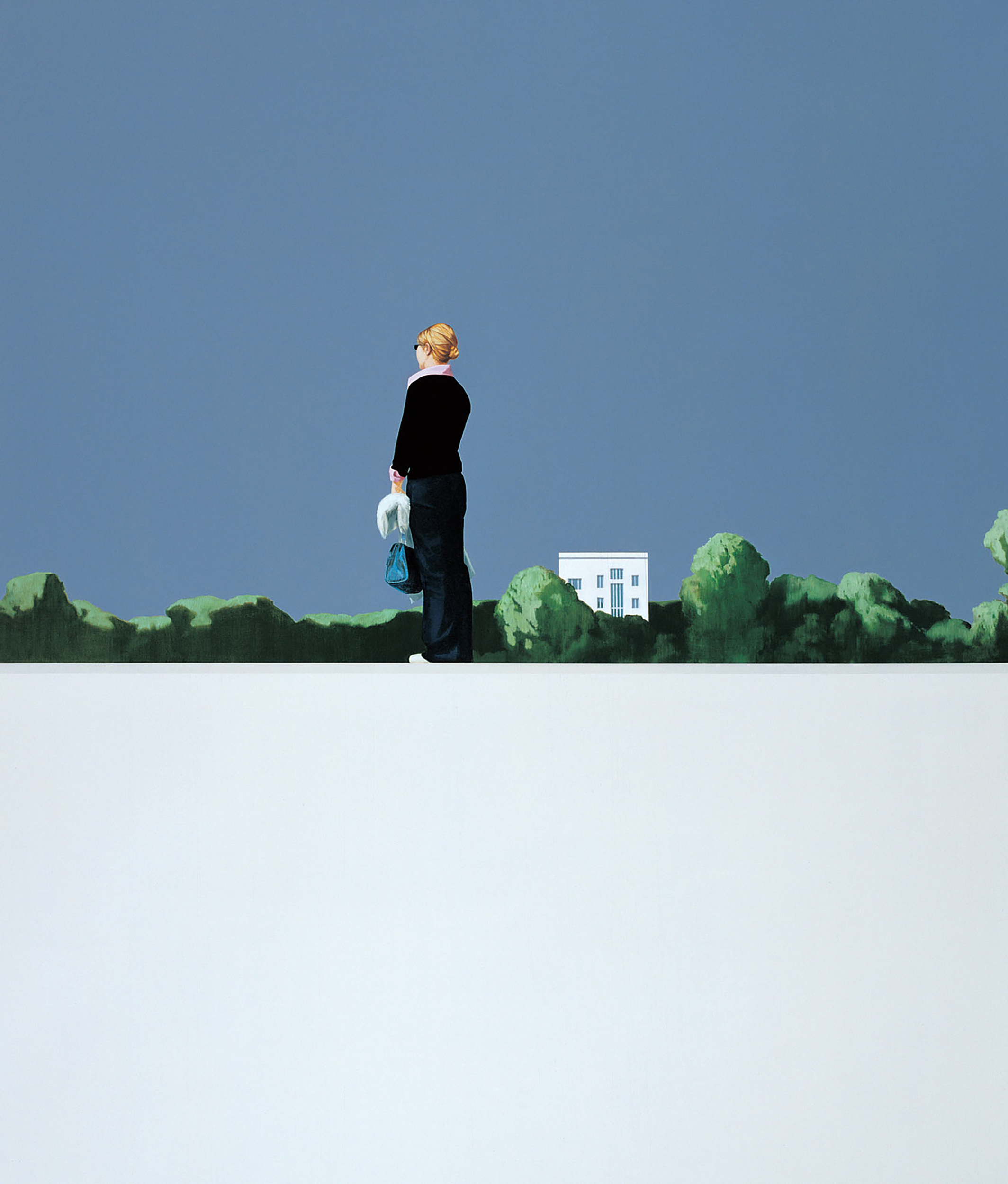
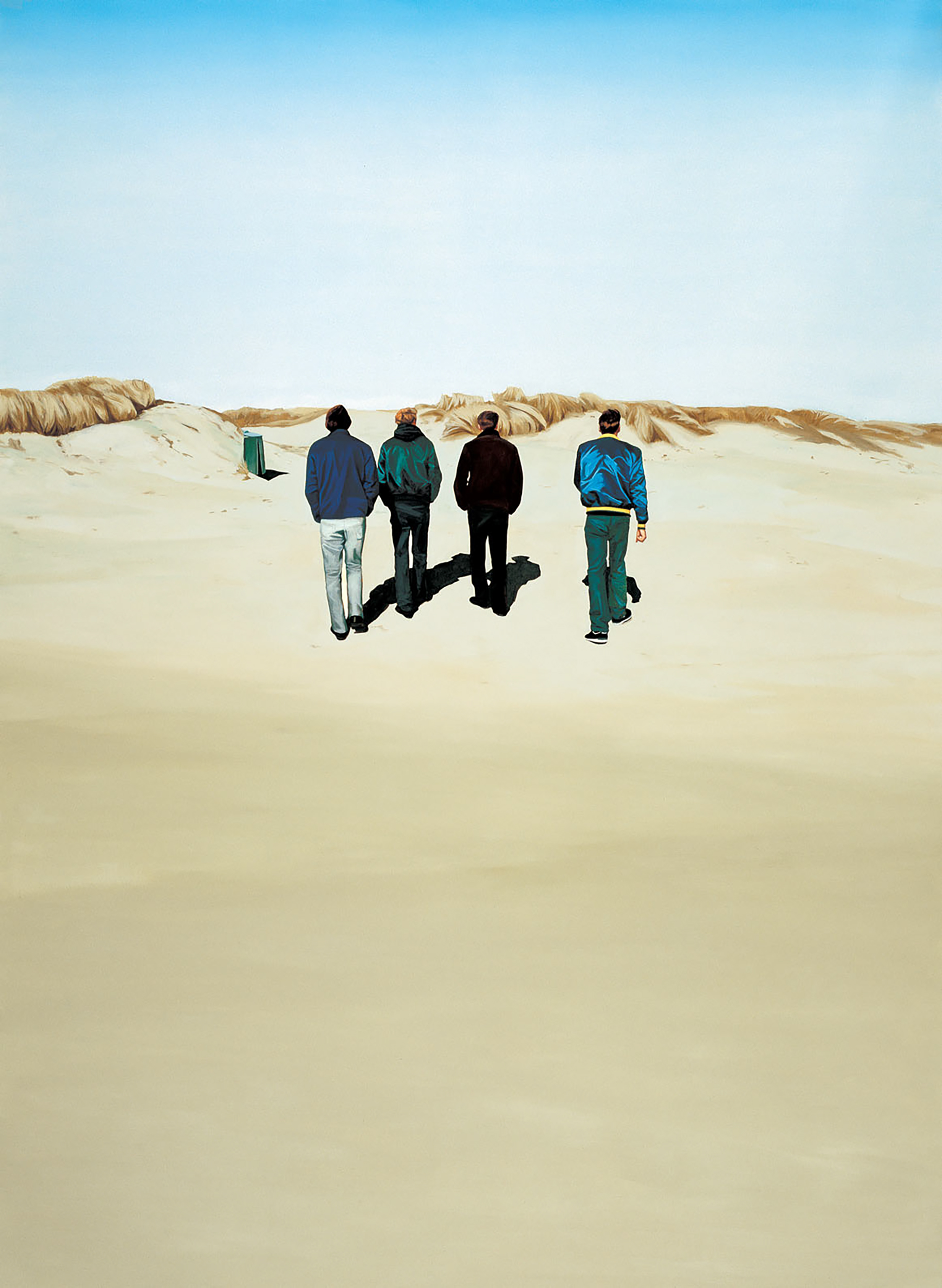
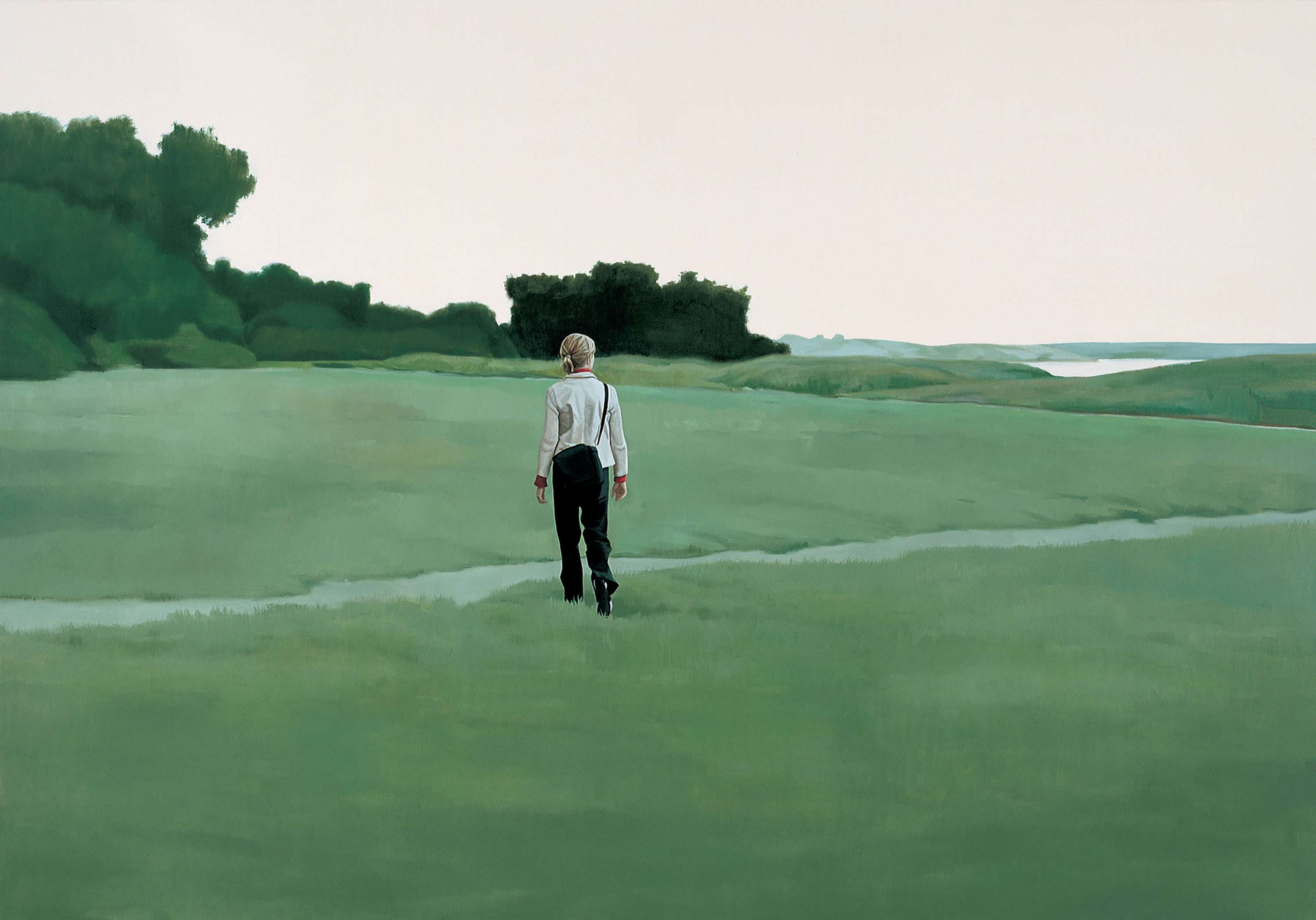
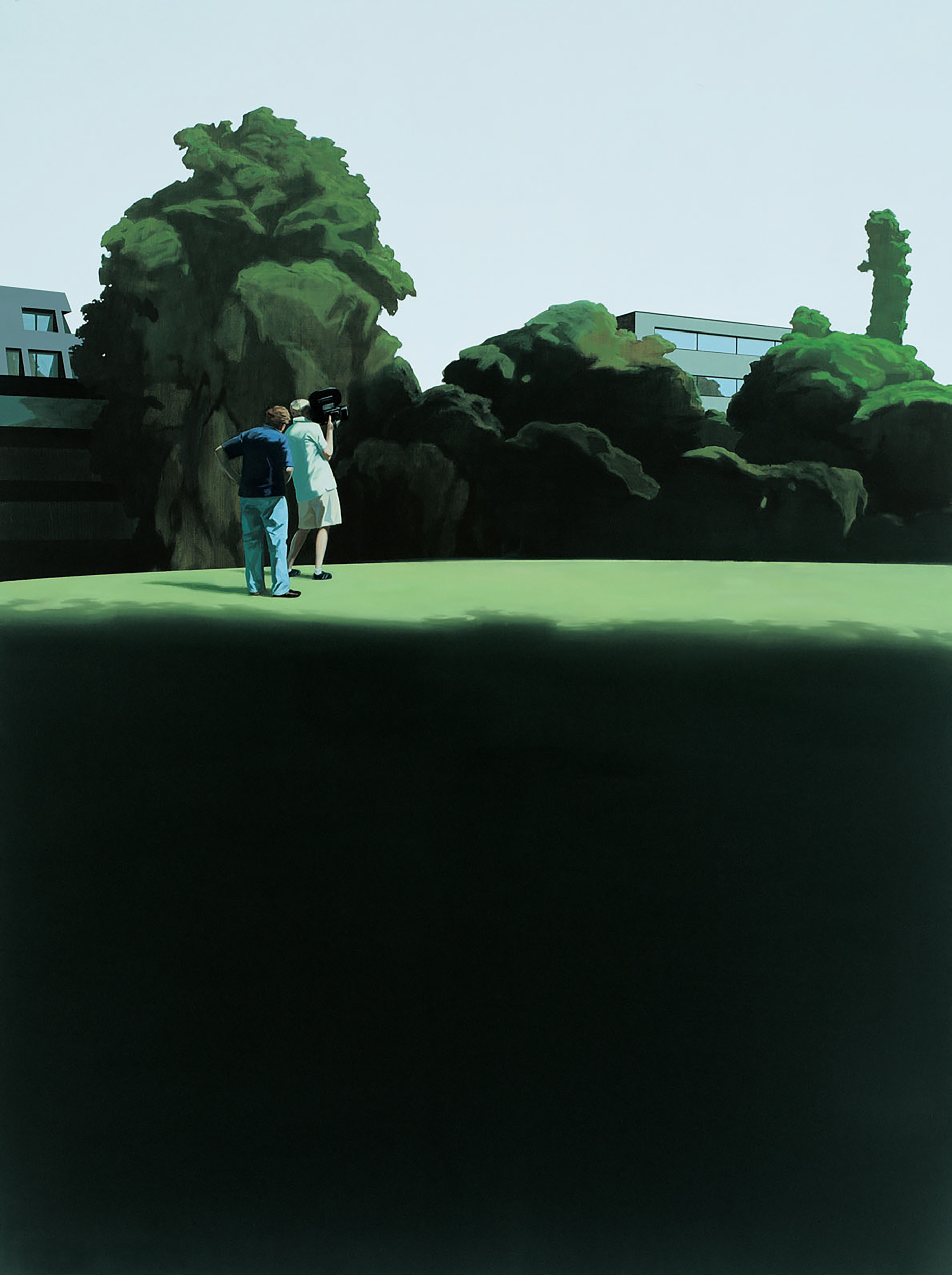
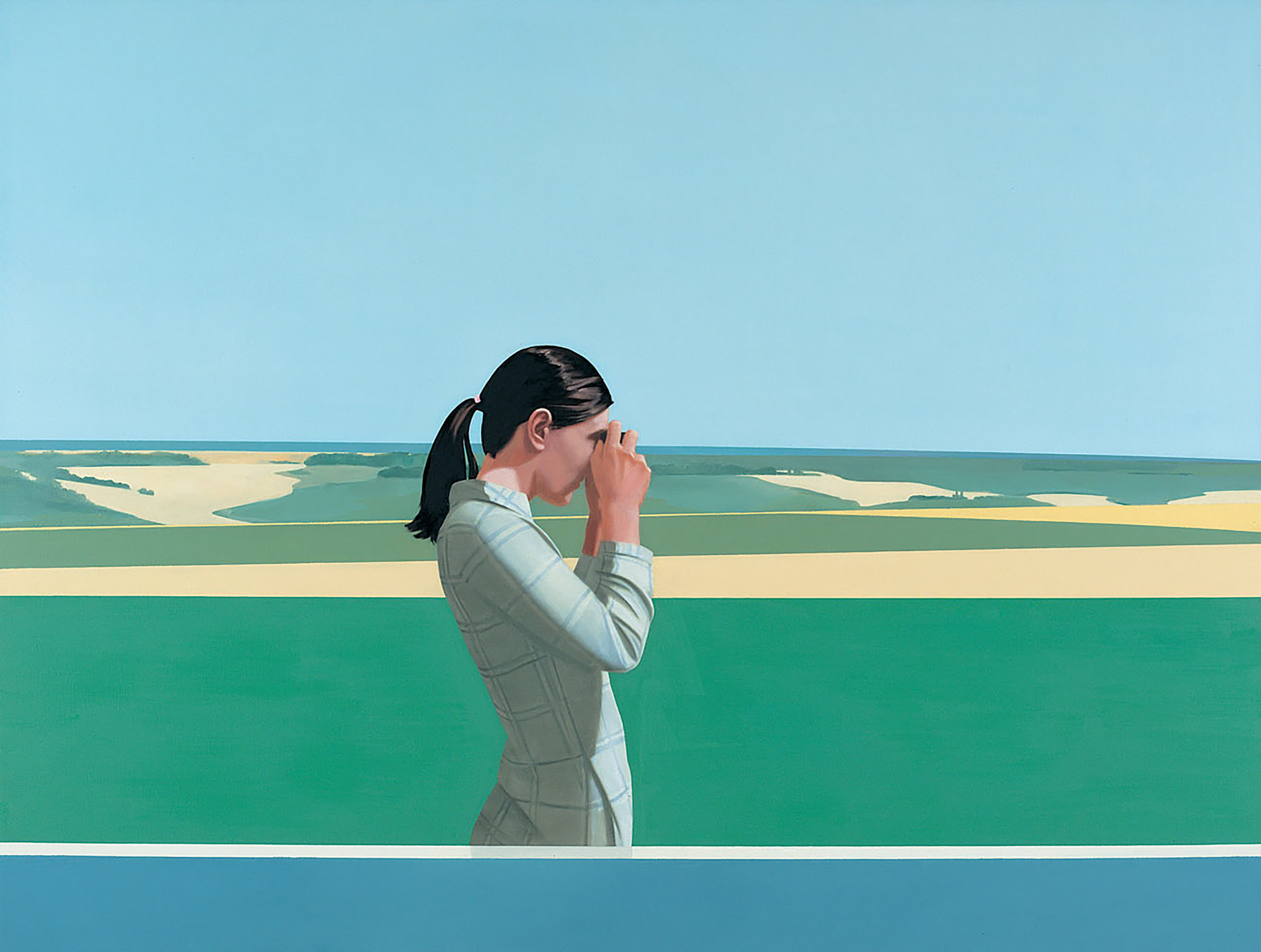
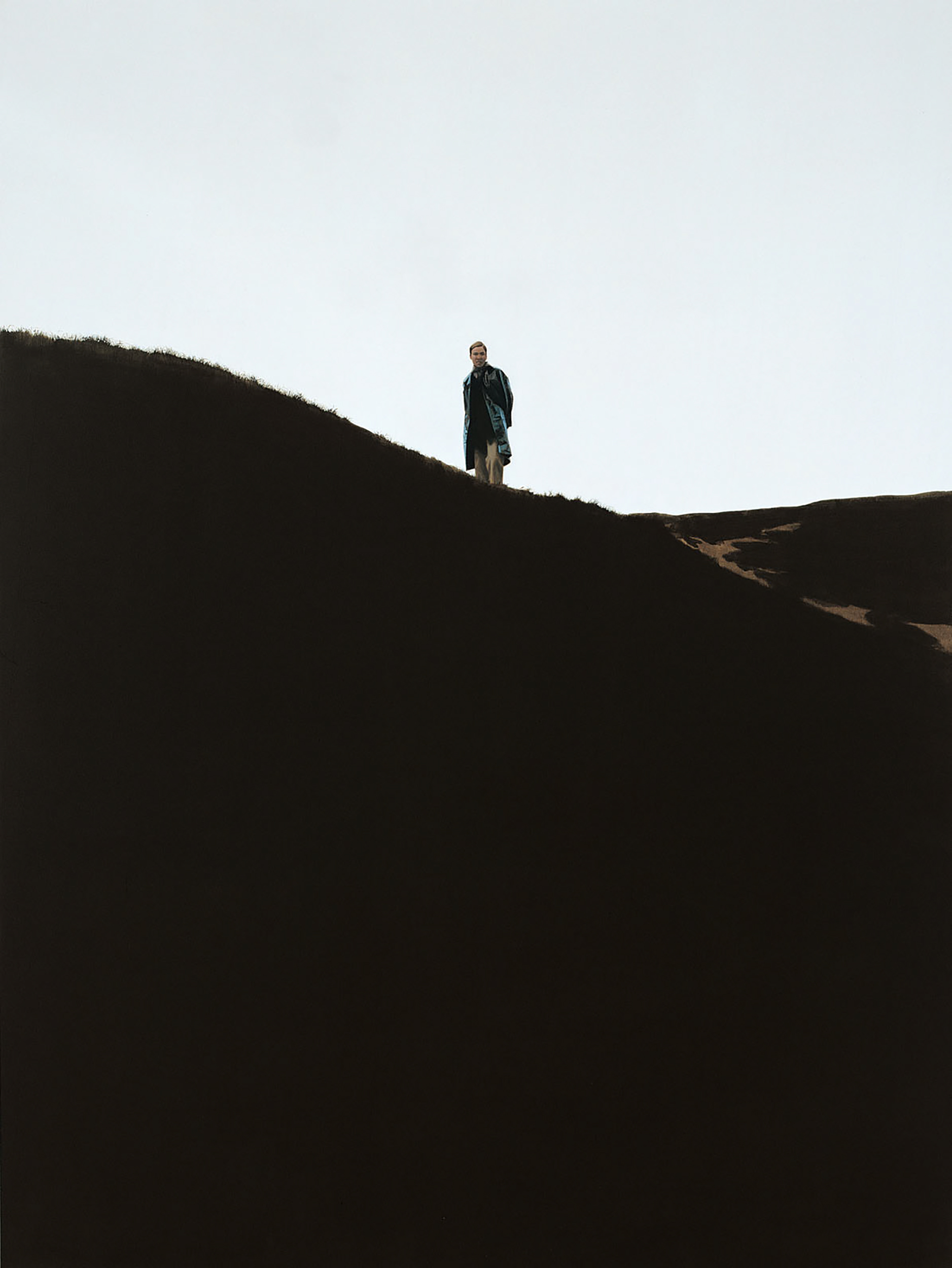
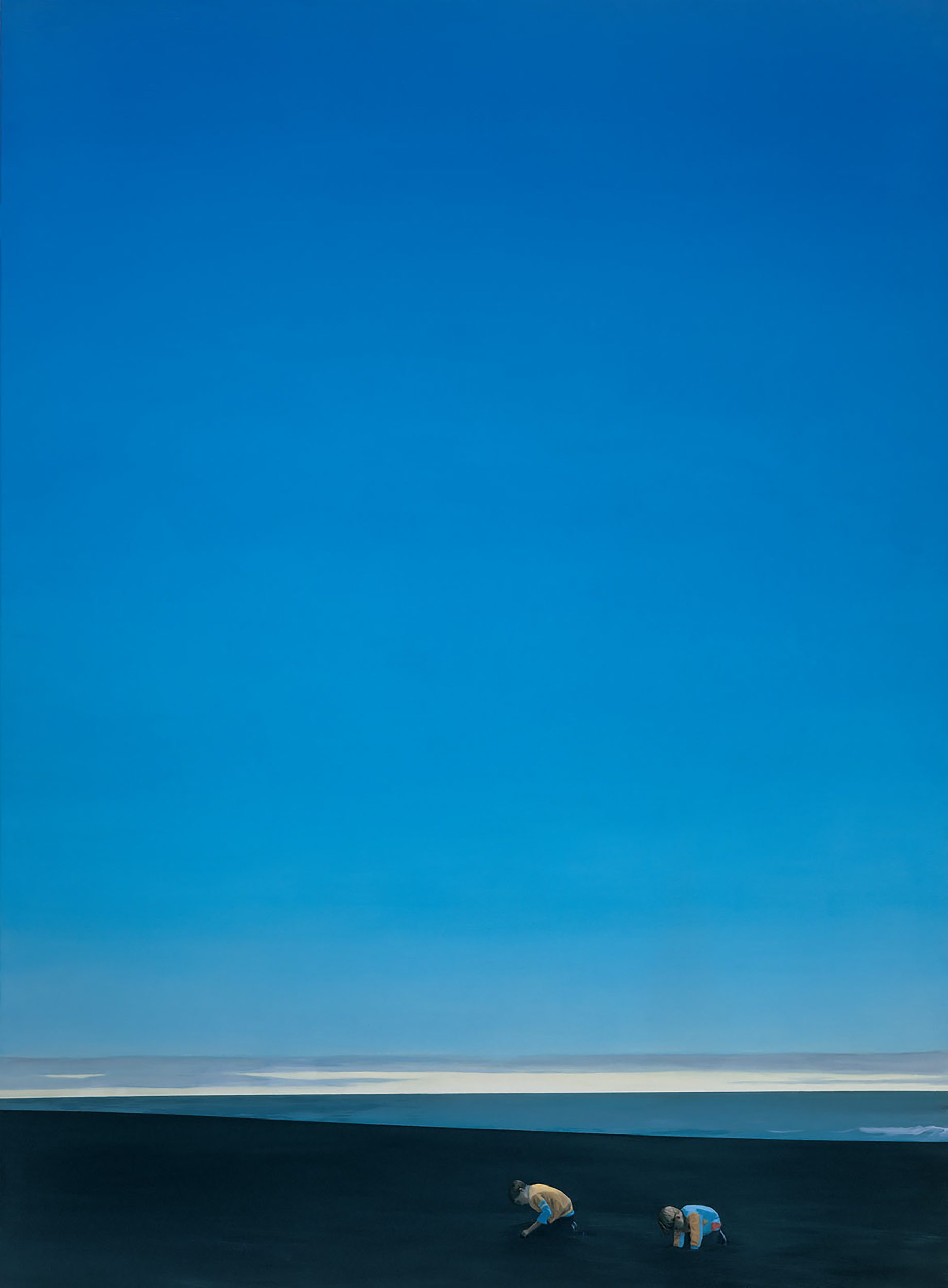
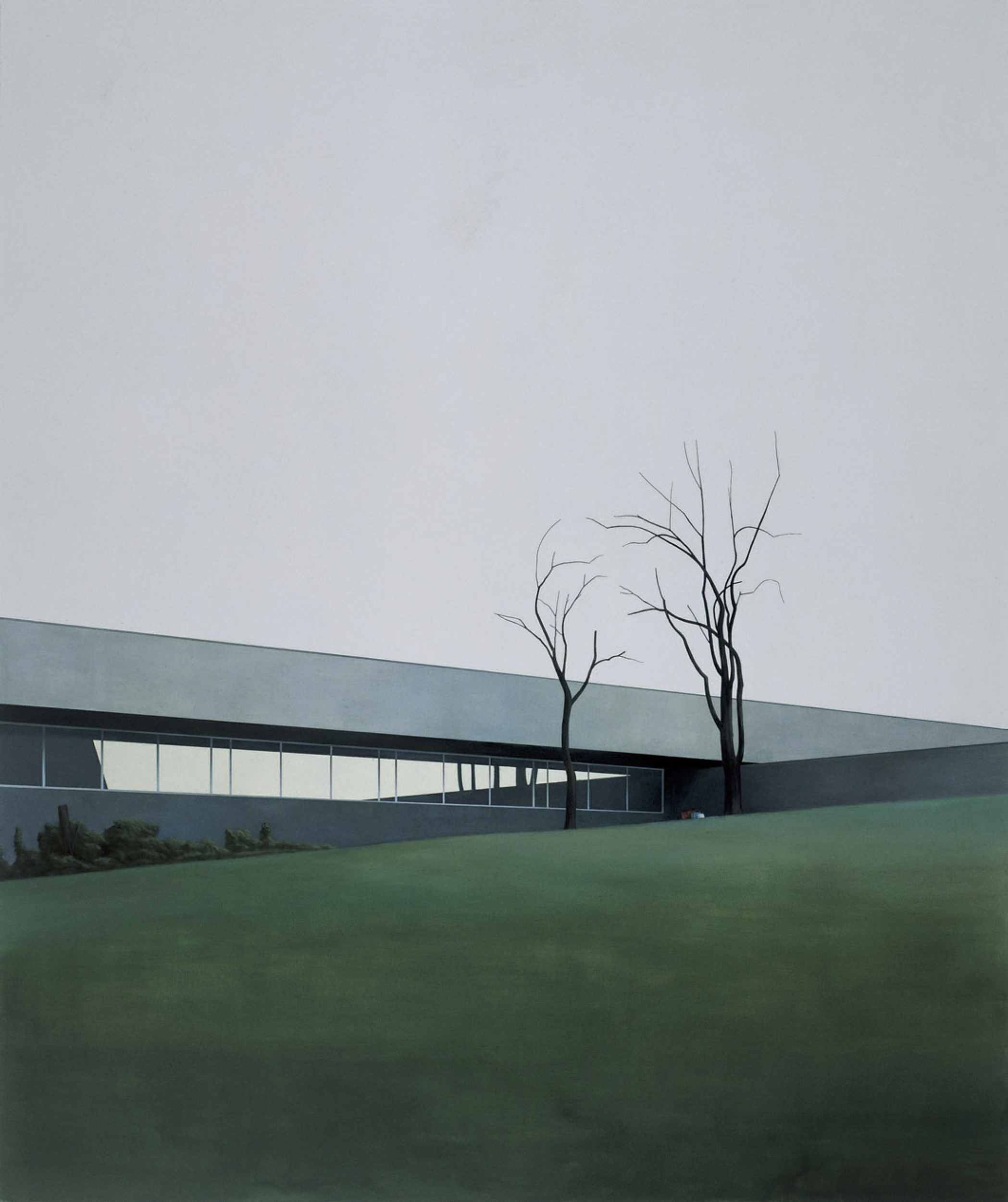
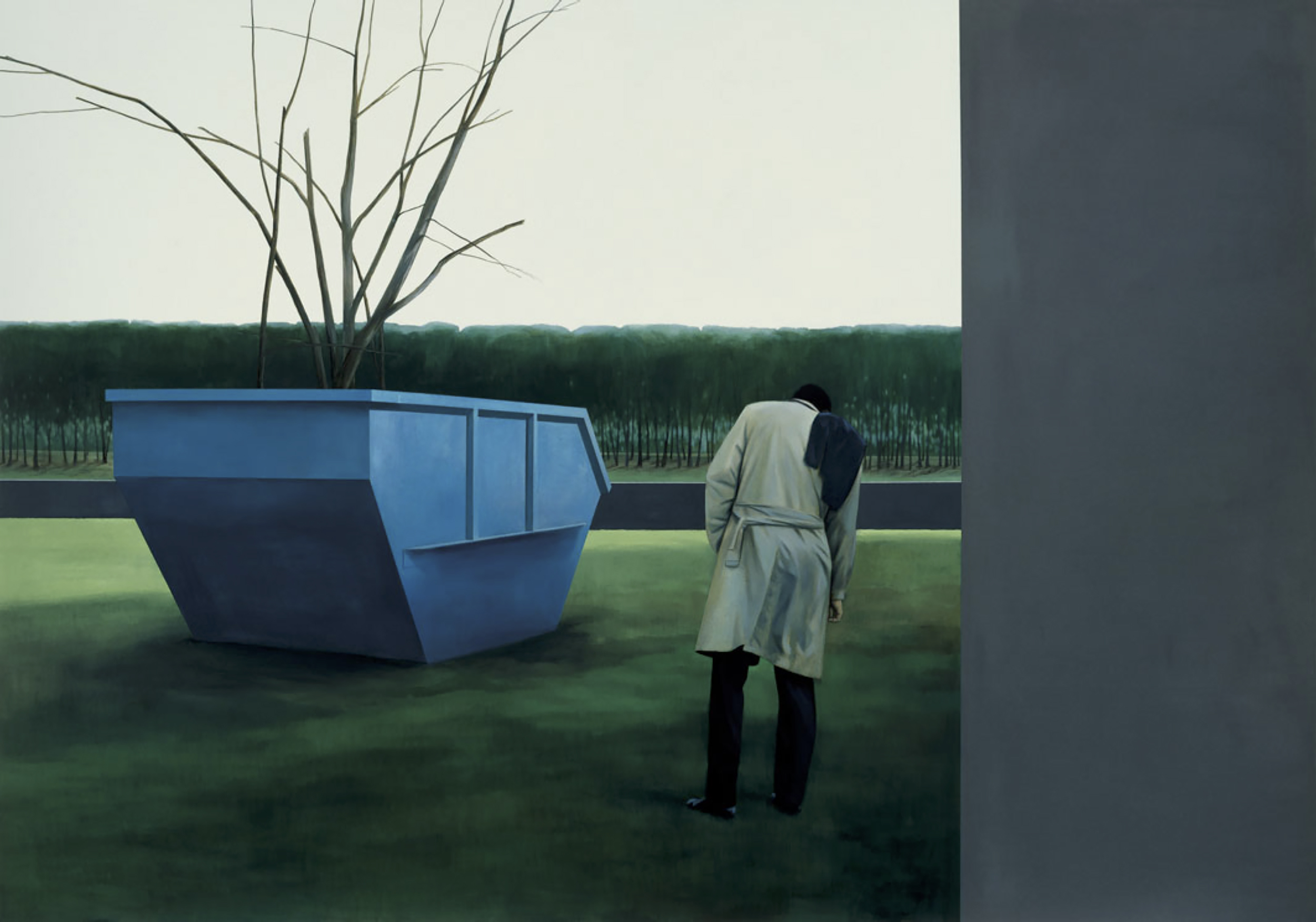
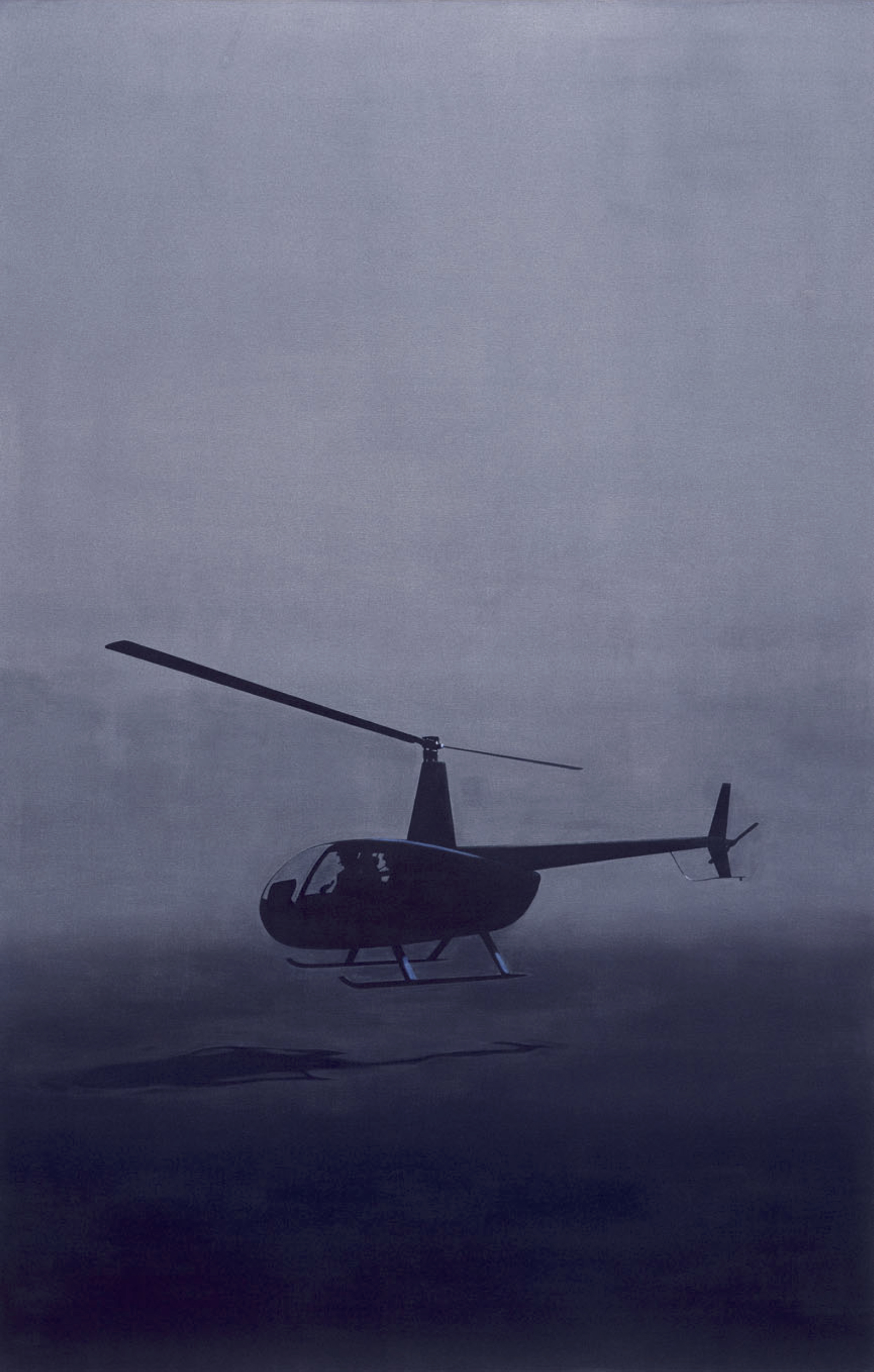
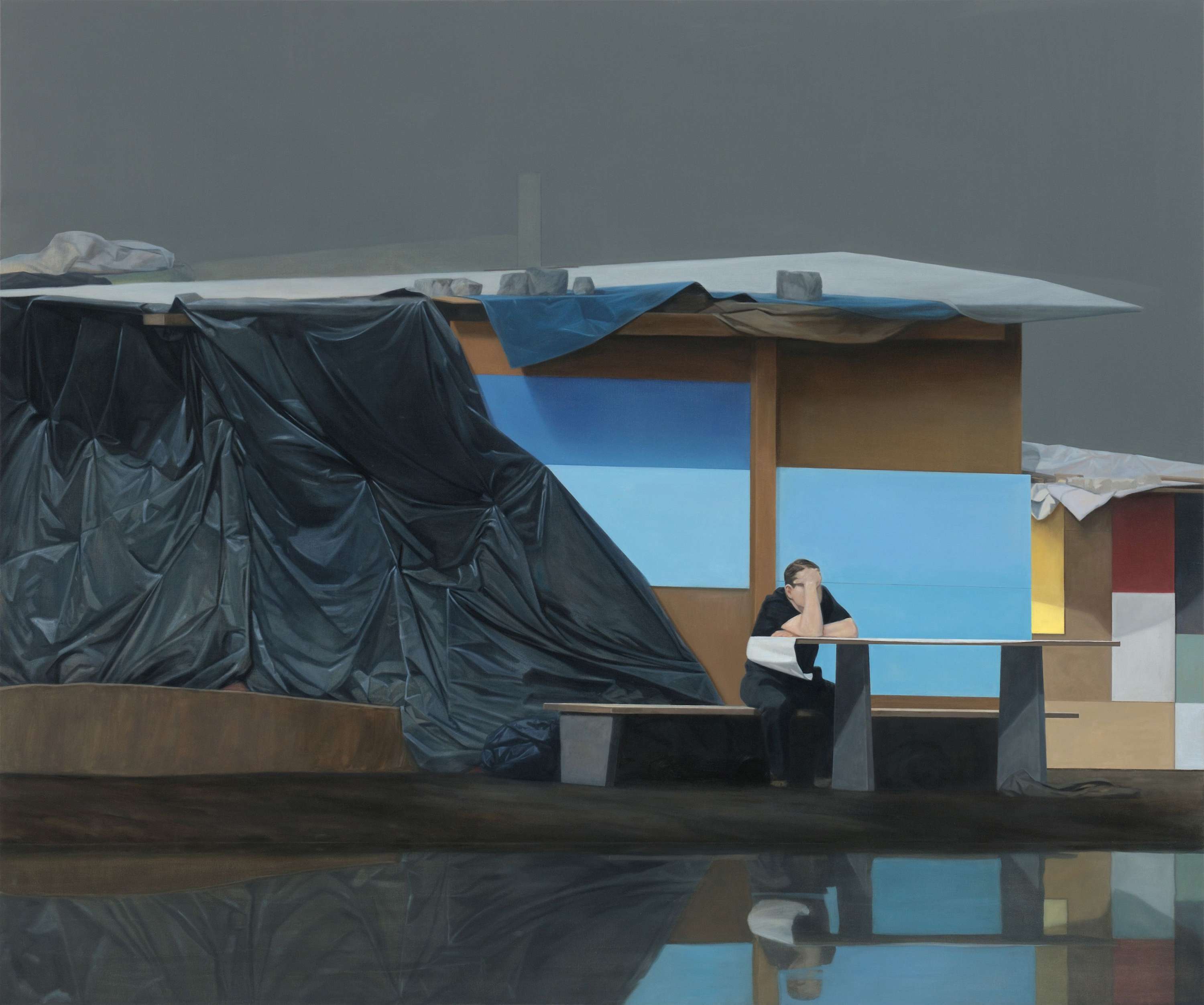
Gallery: Pace Gallery - Galerie Eigen+Art
Collection: Artists Rights Society (ARS), New York, VG Bild-Kunst, Bonn
Text: Martin Schick (Translated by Matthew Partridge)
Publié: Octobre 2019
Catégorie: Peinture
Source